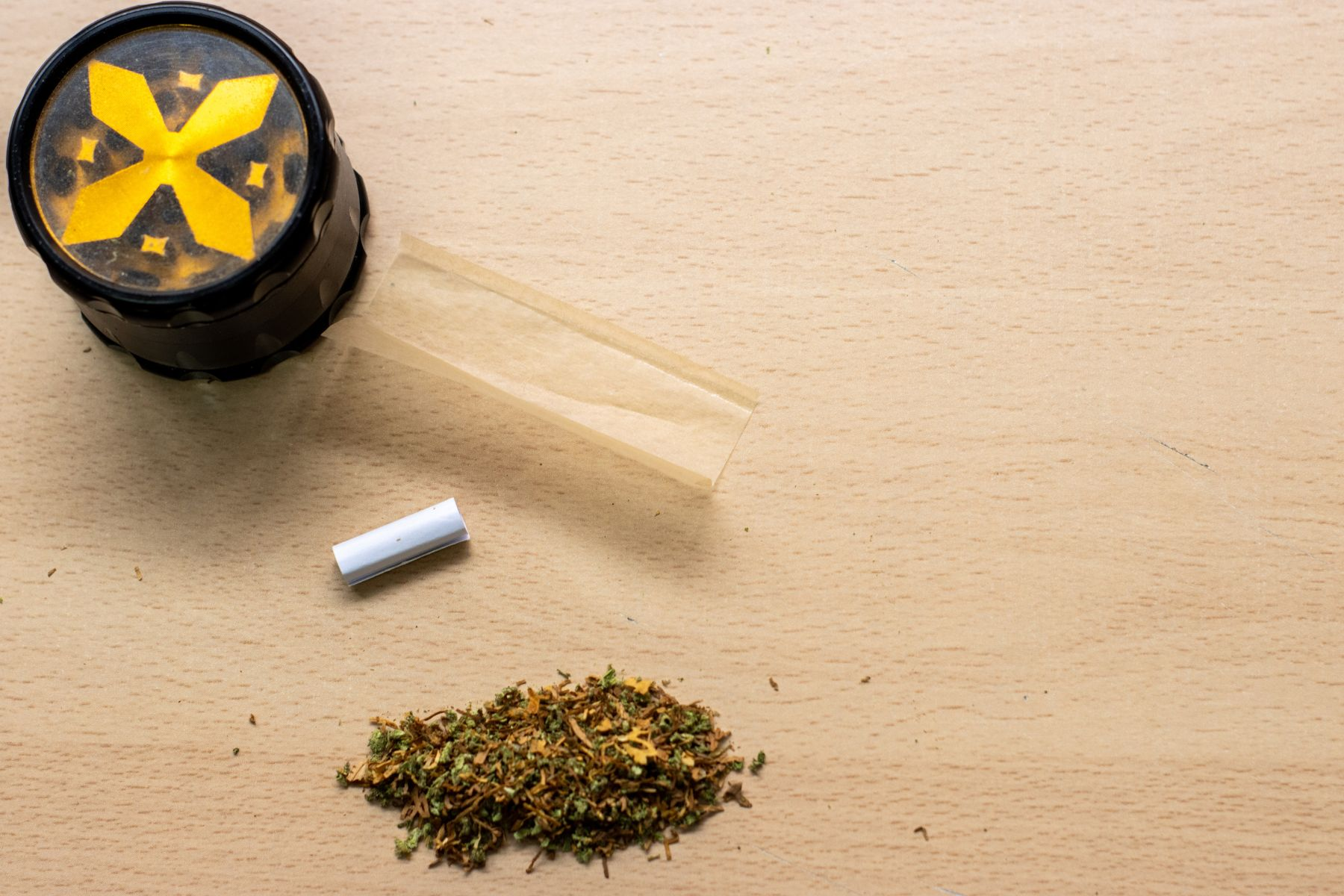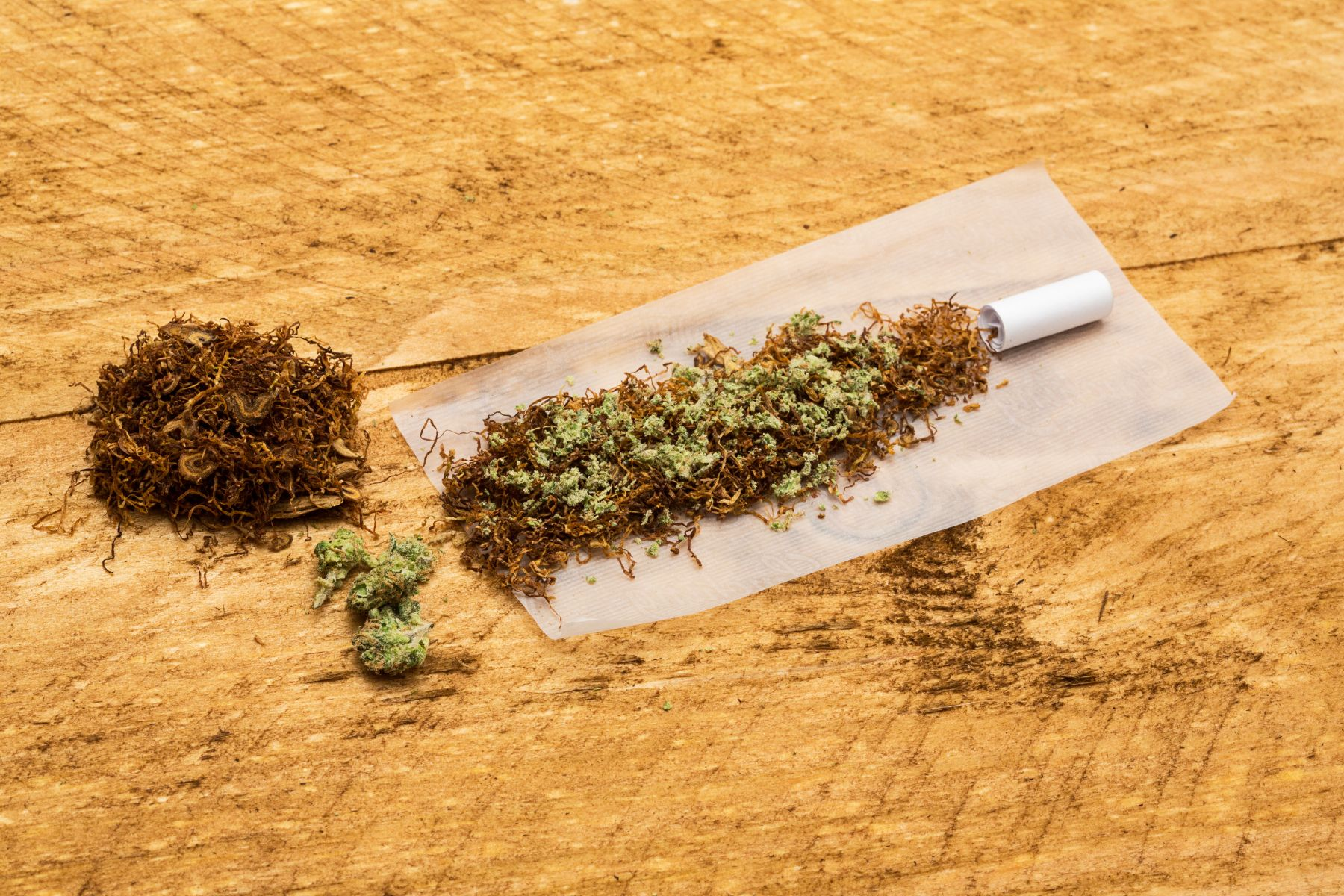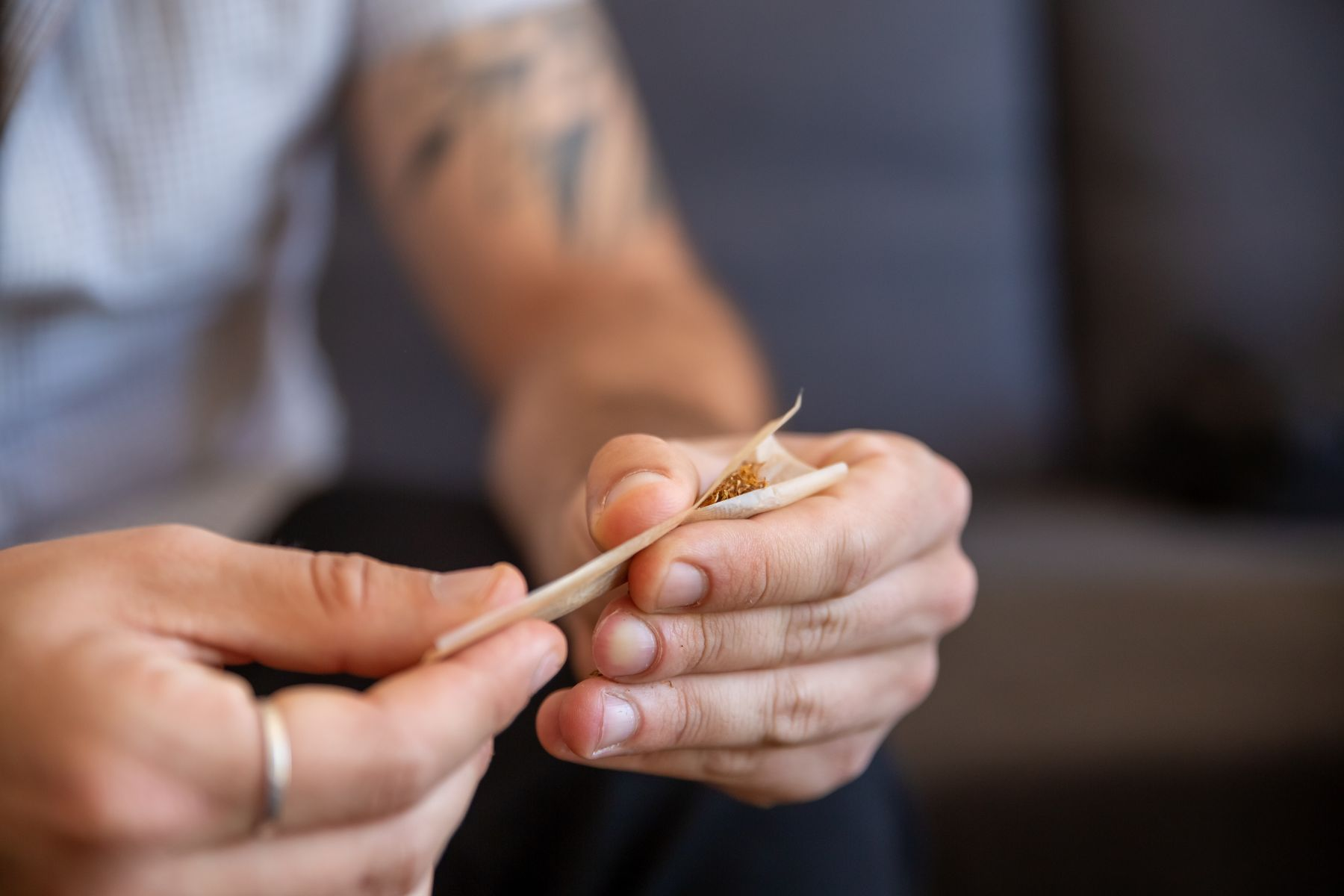Joint with Filter: Everything You Need to Know for a Better Smoke
Introduction
Welcome to the comprehensive guide to rolling the perfect joint with a filter. Whether you're a seasoned smoker or new to the world of cannabis, understanding the art of rolling a joint with a filter can significantly enhance your smoking experience. This guide will take you through every step, ensuring that by the end, you'll be well-equipped to roll your own perfect joint with a filter.
Understanding the Basics: What is a Joint Filter or Crutch?
A joint filter, also known as a crutch, is a small piece of stiff paper or thin cardboard placed at one end of a joint. It serves several purposes: it provides structure to the roll, prevents plant matter from entering your mouth, and ensures the end of your joint doesn't get soggy. Unlike cigarette filters, joint filters do not filter out THC or other cannabinoids, making them ideal for cannabis smoking.
The Importance of Using a Filter in Your Joint
Integrating a filter into your joint has numerous advantages. It leads to a more even burn, reducing the chance of the dreaded 'canoeing' effect where one side of the joint burns faster than the other. Filters also minimize the wastage of ground weed, prevent mouth burns, and make the joint easier to hold, especially as it nears the end. This small addition can dramatically improve your overall smoking experience.
Materials for Making a Crutch or Filter
Choosing the right materials for making a crutch or filter is crucial in rolling the perfect joint. The most common material used is filter paper, specifically designed for this purpose. This type of paper is ideal because it is thin yet sturdy enough to maintain its shape inside the joint. It's also important to consider the size of the filter paper; too small and it won't be effective, too large and it might make rolling difficult.
For those who don't have access to filter paper, stiff paper, like the kind found in business cards or thin cardboard, can be a good alternative. These materials are easily accessible and can be cut to the desired size. However, it's essential to ensure that the stiff paper is not too thick, as it can make rolling the joint more challenging and might affect the draw when smoking.
Another popular choice is crutch paper, which is a bit thicker than regular rolling paper but still flexible enough to be easily rolled. Crutch material should be chosen with care; it needs to be rigid enough to hold its shape but not so thick that it hinders the smoking experience.
For those looking for an eco-friendly option, recycled materials can be used. Old business cards or postcards made of stiff paper are perfect for this. When using recycled materials, it's important to ensure that the ink or other substances on the paper won't emit harmful fumes when heated.
Finally, for those who frequently roll joints, investing in a second filter paper book or a pack of pre-cut filter tips can save time and ensure consistency in your rolls. These pre-cut filters are usually the perfect size and thickness, making the process of rolling a joint with a filter much easier and more convenient.
Therefore, whether you opt for filter paper, stiff paper, crutch paper, or a more sustainable option like recycled materials, the key is to find a balance between flexibility and firmness. The right material will make the process of rolling a joint with a filter smoother and enhance your overall smoking experience.
Step-by-Step Guide: How to Make a Filter for Your Joint
Creating a filter, or a crutch, for your joint is a fundamental skill for enhancing your smoking experience. A well-made filter improves the structural integrity of the joint, ensures a smoother smoke, and keeps the plant matter from getting into your mouth. Here’s a detailed, step-by-step guide to making the perfect joint filter:

-
Choose Your Material: The first step in creating a filter is selecting the right material. The best material for a filter is thin but stiff paper. Specialized filter paper, available in smoke shops, is ideal due to its perfect thickness and flexibility. However, in a pinch, you can use other materials like a piece of a business card, thin cardboard, or even stiff paper from a magazine. The key is to choose a material that is firm enough to hold its shape but flexible enough to be rolled easily. Ideally, the piece should be about 2.5 inches long and 0.5 inches wide.
-
Start the Fold: Begin with the crucial part: folding. The goal here is to create a series of accordion-style zig zag folds at one end of your chosen paper. This process is not just for aesthetics; these folds are integral to the filter's function. They create a barrier that stops any plant matter from getting through while allowing smooth airflow. Typically, three or four zig zag folds are sufficient. Each fold should be neat and sharp – a trick here is to use the edge of a credit card or a similar object to press down and create crisp folds.
-
Roll the Filter: After the initial folds, it's time to roll the filter into shape. Take the remaining length of the paper and start wrapping it snugly around the folded part. This is where you control the diameter of your filter. The rule of thumb is to match the filter's thickness to the desired thickness of your joint. A common mistake here is rolling the filter either too loose or too tight. If it's too loose, it won’t stay in place, and if it's too tight, it will restrict airflow. A balance is key.
-
Finalizing the Filter: Once you have rolled the filter to the desired thickness, it’s time to finalize it. This step involves adjusting the filter to ensure that it holds its shape and fits comfortably at the end of your rolling paper. The ideal filter should be snug enough not to fall out but not so tight that it bends the rolling paper or restricts airflow. Remember, the filter will slightly expand once it’s inserted into the joint, so it’s okay if it feels a bit tight initially.
-
Insert into Your Joint: The final step is to place the filter at one end of your rolling paper before adding your ground weed. This positioning is crucial as it dictates the shape and size of your joint. A well-placed filter makes the subsequent steps of filling and rolling the joint much easier and more efficient. It also ensures that your joint burns evenly and provides a comfortable grip for smoking.
By following these steps, you will create a perfect joint filter that not only improves the structural integrity of your joint but also enhances your smoking experience. Remember, practice makes perfect. So, don’t be disheartened if your first few filters aren’t up to the mark. Keep practicing, and soon you’ll be rolling filters like a pro!
How to Roll a Joint with a Filter
Rolling a joint with a filter, often termed as 'rolling a filter tip' or 'joint filter tip', is not just a skill but an art that enhances your smoking experience. To begin this process, you need quality rolling paper, a well-prepared filter tip, and your choice of ground weed.

-
Preparing the Filter Tip: Start by cutting a small piece of filter paper or crutch paper. A standard size is about 2.5 x 0.5 inches, but this can vary based on personal preference. Fold one end of the paper in zig zag folds, creating what is known as an accordion shape. This is the heart of your filter tip, providing structure and preventing any plant matter from entering your mouth. Remember, the joint filter should be firm enough to hold its shape but flexible enough to fit snugly at the end of your rolling paper.
-
Arranging the Rolling Paper: Lay your rolling paper on a flat surface, the sticky side facing you and up. Position your filter tip at one end of the paper. It’s crucial to leave enough paper on the other end for a comfortable roll.
-
Adding the Cannabis: Sprinkle your ground weed evenly along the rolling paper, ensuring a uniform distribution from the filter tip to the other end. Be cautious not to overfill it, as too much cannabis can make the joint harder to roll and might lead to an uneven burn.
-
Shaping the Joint: This step requires a bit of dexterity. Use your fingers to gently shape the joint, rolling back and forth. The aim is to distribute the cannabis evenly and create a cylindrical shape. The filter tip at one end acts as a guide and provides the initial structure for your roll.
-
Rolling the Joint: Once your weed is evenly distributed, it's time to roll. Tuck the side of the paper without the adhesive around the weed and filter tip. Gently roll it upwards until just the adhesive strip is visible above the weed. Lick the adhesive and carefully roll it all the way around the joint. Ensure the paper is tight enough around the cannabis and filter but not so tight that it restricts airflow.
-
Securing and Finishing: Once rolled, run a lighter quickly along the length of the joint to dry the adhesive. This step helps in securing the paper and maintains the joint's shape. If there's excess paper at the tip opposite the filter, twist it to close off the joint.
-
Final Touches: For a final touch, tap the filter end of the joint on a hard surface. This action helps to pack the cannabis down and provides a better draw. If needed, you can also use a small object to gently pack the cannabis from the open end before twisting it shut.
Remember, the key to a perfect joint with a filter is patience and practice. Each step, from choosing the right rolling papers and preparing the filter tip to the final roll, contributes to the quality of your smoking experience. Don't be discouraged if your first few attempts aren't perfect. With time, rolling joints with a filter will become a seamless part of your smoking ritual.
Creative Designs for Your Joint Filter
When it comes to rolling joints, adding a creative touch to your joint filter can elevate the entire experience. Not only do these unique filters add aesthetic appeal, but they also showcase your personality and rolling skills. Let's explore some inventive designs you can try for your next joint filter tip.
-
Heart Filter: A heart filter, perfect for sharing with someone special or at romantic gatherings, is a delightful twist. Start by making a standard filter tip, then carefully fold and sculpt the filter paper into a heart shape. This design not only looks charming but also serves as a conversation starter.
-
Peace Sign Filter: Embodying a message of peace and love, the peace sign filter is another creative option. This requires a bit more skill as you’ll need to fold the filter paper intricately to create the peace sign. It’s a symbol that resonates well at social gatherings and adds a fun element to your smoking experience.
-
Weed Leaf Filter: For the cannabis aficionado, what could be more fitting than a weed leaf filter? This design might take some practice, but the result is a striking representation of the plant you love. Use a small piece of stiff paper and meticulously fold it to resemble a leaf. This filter is not only visually appealing but also a nod to cannabis culture.
Incorporating these designs into your joint rolling process is a fantastic way to personalize your smoking experience. Whether it’s the romantic heart filter, the iconic peace sign filter, or the cannabis-themed weed leaf filter, these creative twists are sure to impress your friends and add an extra layer of enjoyment to your smoking sessions.
Remember, the perfect joint filter not only serves a functional purpose but can also be a form of artistic expression. So next time you roll a joint, consider adding a creative filter for that extra flair.
Advanced Techniques: Rolling a Crutch for Larger Joints

For party joints or larger rolls, a more substantial crutch is needed. Use thicker, more durable paper and ensure your folds are tight and secure. The final crutch should be robust enough to support the weight and size of a larger joint.
FAQs and Troubleshooting
What Material Can You Use for Joint Filters?
-
Ideal Materials: Specialized filter paper or stiff paper like business cards are excellent choices for crafting joint filters.
-
Alternative Options: In a pinch, materials like thin cardboard can be used, but avoid using glossy or heavily inked paper as it can affect the taste and quality of your smoke.
-
Innovation and Experimentation: Feel free to experiment with different materials to find what suits your rolling style and smoking experience best. However, consistency in material choice is key to rolling perfect joints consistently.
Can You Reuse Filter Tips?
-
Disposable vs. Reusable: Most filter tips, especially those made from paper, are designed for single use. However, some smokers do reuse them for a couple of rolls. It's important to note that reusing filter tips can lead to a buildup of resin and potentially alter the taste of your joint.
-
Hygiene and Effectiveness: For the best smoking experience and hygiene, it's advisable to use a fresh filter tip for each joint. Reusable filter tips made of glass or metal are also available and can be a great investment for regular smokers.
Can You Use Cigarette Filters in Joints?
-
THC Filtration: It's generally not recommended to use cigarette filters in joints. Cigarette filters are designed to filter out tar and other harmful substances from tobacco smoke. However, they can also filter out THC, the primary psychoactive compound in cannabis, potentially reducing the potency of your joint.
-
Alternatives: Instead of cigarette filters, using a crutch or joint tip made specifically for cannabis is advisable. These are designed to filter out only the plant matter without affecting the THC content.
How Do You Ensure the Filter Fits Perfectly in the Joint?
-
Sizing the Filter: Measure the filter against the rolling paper to ensure it fits snugly at one end. The filter should not be too tight or too loose. A perfect joint filter fits just right, allowing for smooth airflow and an enjoyable smoking experience.
-
Rolling Technique: When you start rolling your joint, make sure the filter is secure and in place. This will prevent it from moving around and ensure that your joint is evenly packed from end to end.
Why Is My Joint Burning Unevenly?
-
Even Distribution of Ground Weed: Ensure your cannabis is evenly ground and distributed throughout the rolling paper. Lumps or uneven distribution can cause uneven burning, often referred to as ‘canoeing’.
-
Rolling Pressure: Apply even pressure while rolling your joint. Uneven pressure can lead to loose or tight spots, which causes uneven burning.
-
Quality of Rolling Paper: The quality of your rolling papers can also affect the burn. Thin, evenly burning papers are recommended for a consistent experience.
What to Do If the Joint Filter Gets Too Wet?
-
Preventing a Soggy Filter: If you find your joint filter getting too wet, try using thicker or more absorbent filter paper. This can help in retaining the shape and effectiveness of the filter throughout the smoking process.
-
Quick Fix: In case your filter does get soggy, you can gently dry it with a paper towel. However, the best solution is to roll a new filter to ensure the integrity of your smoking experience.
Incorporating these tips and answers into your joint-rolling routine can significantly enhance your rolling and smoking experience. Remember, practice makes perfect, and experimenting with different materials and techniques is part of the fun in creating the perfect joint.
Sourcing Your Supplies: Where to Get the Best Materials
For the best rolling experience, quality rolling papers and filter tips are essential. Many smoke shops offer a variety of options, including pre-rolled filters. Reusable joint tips made of glass or metal are also available for those seeking a more durable option.
Conclusion
Rolling a joint with a filter is an art form that enhances the smoking experience. This guide has covered everything from selecting the right materials to rolling techniques, ensuring you have all the knowledge needed to roll the perfect joint with a filter. Remember, practice makes perfect, so don’t be discouraged if your first few attempts aren’t flawless.





















